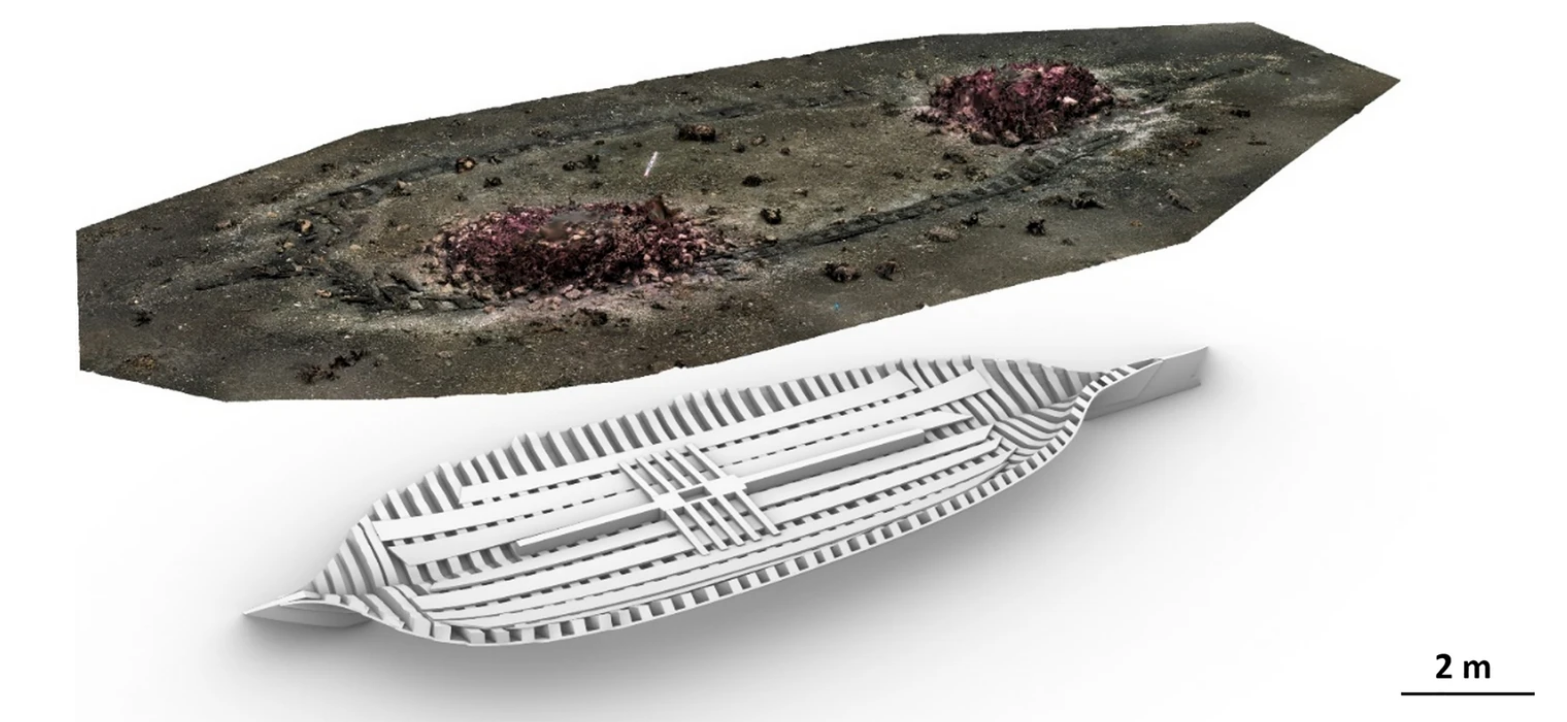Maritime archaeologists have recently returned to the site of a sunken medieval shipwreck to carry out a new geophysical survey, hoping to uncover more of the vessel’s long-lost story.
Known as the Avaldsnes ship, the 600-year-old wreck is found in a shallow body of water less than 1 meter (3 feet) deep in an intertidal environment near Avaldsnes, a village on the island of Karmøy in southwestern Norway.
The shipwreck is well-known and has been studied for decades. However, researchers at the University of Stavanger and Stavanger Maritime Museum wanted to gain a deeper understanding of the sunken artifact with the help of new technology.
Using a robotic boat, known as an Autonomous Surface Vehicle (ASV), the team gathered geophysical data about the artifact and surrounding area, allowing them to create an accurate 3D model of the shipwreck.
“Ultimately, a detailed 3D model can expose essential information like horizontal and vertical distribution of the embedded remains, depth of burial, structure of the hull and construction details of the shipwreck,” the study authors wrote in the paper.

Photogrammetry and 3D-model of the preserved wreck.
“The ASV provides fast mobilization and easy access to areas where it usually would be difficult to steer traditional boats. Operating an unmanned working platform allows for a very time-efficient, non-invasively study of the seafloor and the subsurface features by collecting high-resolution seismic data in a dense grid,” they added.
Today, Avaldsnes is a sleepy village of just a few thousand people, but it was a bustling hub of power and trade from the early Bronze Age until the end of the Middle Ages.
During the medieval period, the coastal settlement was the site of a fortified royal palace and a key port that was used by the Hanseatic League, a giant confederation of merchant guilds and market towns in Central and Northern Europe.
It’s safe to assume that the Avaldsnes ship was journeying within this busy trade network. The wreck is a medium-sized merchant ship, which the researchers describe as a “fine vessel, built by highly skilled shipbuilders”. Previous analysis of its timber indicates the ship was made in the region of the Vistula estuary in present-day Poland in the year 1395 CE. It sank shortly after as a result of an onboard fire, most likely around 1399 to 1415 CE.
Archaeologists also discovered that animal hair and moss had been placed between the planks to act as a sealant. They also found evidence of mats made out of twigs, which were perhaps used to protect the cargo from humidity and harsh weather.
The new study is published in the Journal of Maritime Archaeology.
Source Link: Robot Reveals Story Of A 600-Year-Old Medieval Shipwreck In Norway